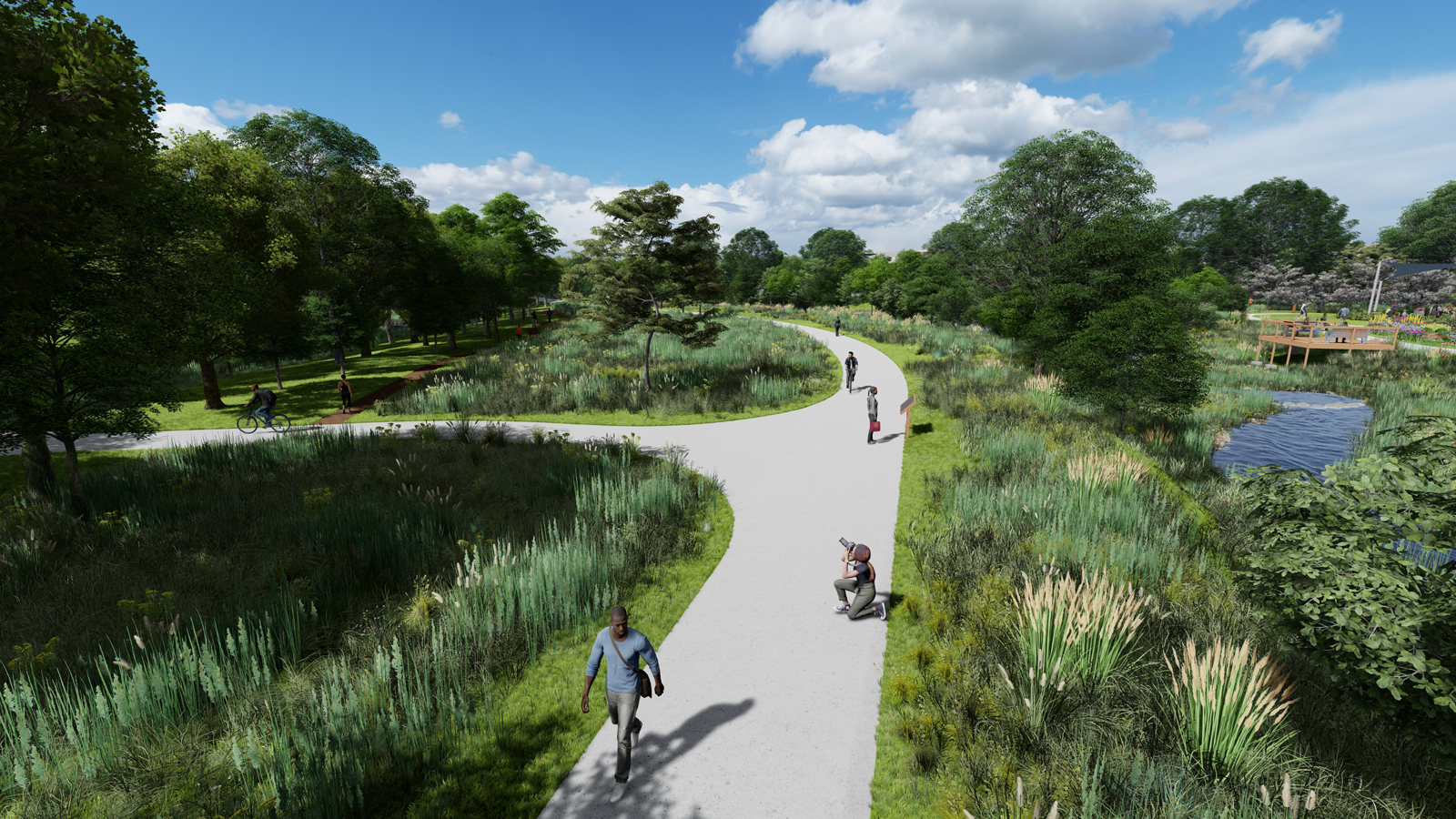Reclaiming the Flint headwaters as a lush riverside greenway

The Flint River is one of only 40 rivers left in the United States that flows for more than 200 miles unimpeded, winding more than 344 miles in total through southwest Georgia to the Florida state line. The river provides critical water resources for farms and families throughout the region and is home to several threatened and endangered species. But the Flint River begins in obscurity, first emerging from storm pipes at a 7.8-acre under-utilized gated greenspace in the city of College Park. While the river is visible, it is contained in an aging concrete flume that increases downstream flooding, degrades water quality and aquatic habitat, and is visibly unappealing. From there, the river vanishes once again into a series of culverts, pipes, and storm drains that run directly beneath the runways of the world’s busiest airport— Hartsfield-Jackson International. Anyone who has visited Atlanta’s airport has likely taxied right over the Flint River without ever knowing there’s a river beneath them.
The river is invisible not only to airport visitors but also to area residents, many of whom have no idea they live in the headwaters of this regionally significant natural resource. A group of nonprofit and municipal partners working under the banner of Finding the Flint are on a mission to restore the river ecologically and in the hearts and minds of the Atlanta ‘aerotropolis’ community. The group’s flagship project, Flint River Headwaters Nature Preserve , promises to transform the 7.8-acre fenced site into a free-flowing river habitat accessible to the public.

Finding a river, creating a community resource
Finding the Flint is the inspiration of Hannah Palmer, an author and urban planner who discovered the forgotten river headwaters while writing her book Flight Path . Exploring the toll of airport development on her local community, Hannah discovered that the vital headwaters of the Flint River had been piped, paved, and wiped off the map in many places by decades of airport expansion and other industrial growth. Since 2017, Palmer has worked in partnership with The Conservation Fund, American Rivers, and the Atlanta Regional Commission to raise awareness of the lost Flint River and to promote its restoration as a public resource. “Finding the Flint is a big vision for a healthier river and better quality of life in the airport area,” reflects Palmer.
Finding the Flint’s key initiative, The Flint River Headwaters Nature Preserve, will transform a fenced-in site owned by local public transit agency MARTA into healthy, free-flowing river habitat accessible to the public. The plot sits just 1.5 miles north of the airport in a highly urbanized neighborhood that has been severely impacted by decades of airport growth and industrial use. By restoring the natural streambed and opening the property for public access, the project will provide numerous environmental and community benefits. Restoration efforts will increase native habitat for aquatic and terrestrial species and improve overall water quality, while also better managing stormwater runoff from adjacent streets. Importantly, this site will be open to the public, providing much-needed access to nature, recreation, and exercise, improving physical and mental health, and increasing the overall quality of life for residents living in the highly industrialized area. The site will include a lush riverside greenway, constructed wetland areas, nature trails and raised boardwalks, gathering areas, seating, and an outdoor classroom. The Flint River Headwaters Nature Preserve will be funded by state and federal sources, along with matching funds from Microsoft and other private philanthropic partners.

The community is at the center of the project plan. Neighbors and local leaders are working alongside ecologists and landscape designers to realize the community’s vision of a public recreation space. According to Finding the Flint partners, the goal is to “create new experiences at the water’s edge, reveal these hidden headwaters, and to connect communities as we restore the river.”


